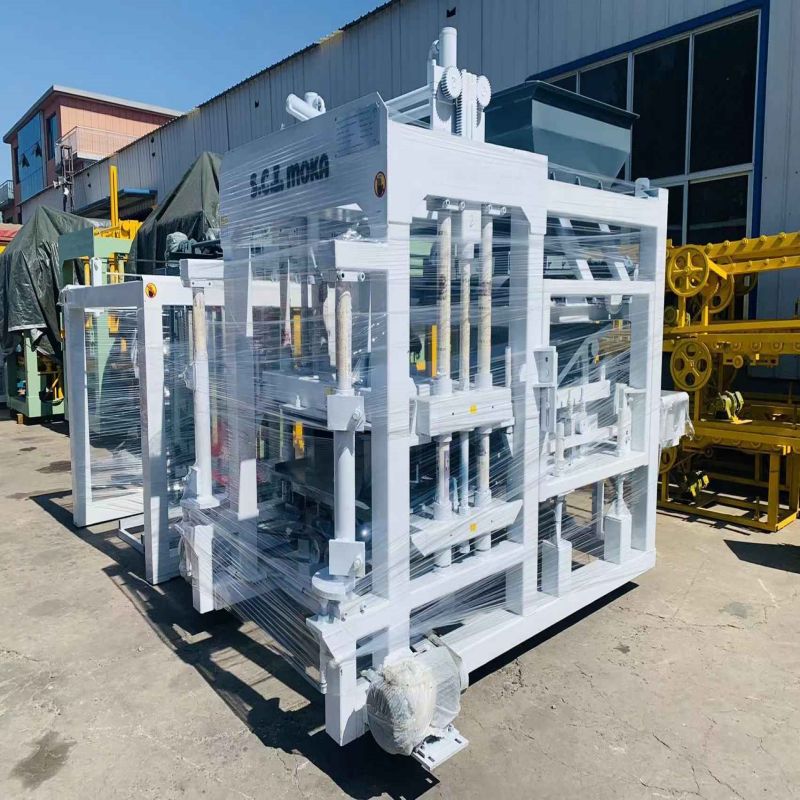
Image source:Aiwei block machine
Introduction
The Chinese brick making machine industry has witnessed remarkable innovations and advancements in recent years, driven by the need for increased efficiency, sustainability, and productivity. These innovations have transformed the traditional brick manufacturing processes, paving the way for enhanced performance, improved quality control, and reduced environmental impact. In this article, we will explore some of the notable innovations and advancements in Chinese brick making machines, highlighting their benefits and impact on the industry.
Automated Systems and Robotics
Automation and robotics have revolutionized the brick making machine industry in China. Manufacturers have integrated automated systems and robotic technology into their machines to streamline production processes, enhance efficiency, and minimize human error. Automated systems can perform tasks such as material handling, mixing, molding, and brick stacking with speed and precision, leading to increased productivity and reduced labor costs.
Robotic arms equipped with advanced sensors and vision systems ensure accurate and consistent brick production. They can inspect each brick for defects, contributing to better quality control and minimizing wastage. The use of automation and robotics in Chinese brick making machines has not only improved productivity but also created safer working environments for operators.
Sustainable Practices
In response to the global focus on sustainability, Chinese brick making machines have embraced eco-friendly practices. Manufacturers are increasingly incorporating sustainable materials and processes into their machines to reduce environmental impact. For instance, some machines now utilize recycled aggregates or alternative materials as part of their brick production process, reducing the demand for virgin resources.
Additionally, energy-efficient technologies have been integrated into Chinese brick making machines to minimize energy consumption and carbon emissions. These machines incorporate advanced heating systems, insulation materials, and energy recovery mechanisms to optimize energy efficiency throughout the production cycle.
Advanced Control Systems
Chinese brick making machines have witnessed significant advancements in control systems and software. Manufacturers have developed intelligent control systems that allow operators to monitor and control the entire production process with precision and ease. These systems provide real-time data on machine performance, material usage, and quality control parameters, enabling operators to make informed decisions and optimize production.
Furthermore, machine learning algorithms and artificial intelligence (AI) are being utilized to optimize brick making processes. AI algorithms can analyze production data and identify patterns that lead to improved efficiency, reduced wastage, and enhanced product quality. The integration of advanced control systems and AI technology has elevated the performance of Chinese brick making machines, making them more reliable and efficient.
Modular Designs and Customization
Chinese brick making machines now feature modular designs that offer flexibility and customization options to meet specific customer requirements. Manufacturers have developed machines that can produce different brick sizes, shapes, and designs by simply changing the molds or configurations. This modular approach allows for quick adaptation to market demands and offers greater versatility in brick production.
Moreover, Chinese manufacturers provide customization options to cater to the unique needs of different construction projects. Customers can choose the level of automation, capacity, and additional features to suit their specific production requirements.
Integration of IoT and Data Analytics
The integration of the Internet of Things (IoT) and data analytics has transformed the way Chinese brick making machines operate and are maintained. IoT sensors are installed in machines to collect real-time data on various parameters, including temperature, pressure, vibration, and energy consumption. This data is then transmitted to a centralized system, allowing operators to monitor the machines remotely and identify potential issues before they escalate.
Data analytics algorithms analyze the collected data, providing valuable insights for process optimization, predictive maintenance, and resource management. This integration enables manufacturers to improve machine performance, reduce downtime, and maximize productivity.
Conclusion
The Chinese brick making machine industry has witnessed remarkable innovations and advancements, positioning it at the forefront of global brick manufacturing. The integration of automation and robotics, sustainable practices, advanced control systems, modular designs, and IoT technologies has revolutionized the industry, leading to increased efficiency, improved quality control, and reduced environmental impact.
These innovations not only benefit brick manufacturers by enhancing productivity and profitability but also contribute to sustainable construction practices. As the industry continues to evolve, it is expected that further innovations and advancements will shape the future of Chinese brick making machines, driving the industry towards even greater efficiency, sustainability, and customization capabilities.
